
Getting Started with Paddle Boarding
Stand Up Paddle Boarding. Paddle Boarding. SUP. Whatever you’d like to call it, paddling around on a giant surfboard while soaking in nature’s beauty is truly priceless. Paddle boarding has gained immense popularity the past couple of years for good reason. It offers a solid upper body and core workout, while being easy accessible. Nearly any body of water will work – ocean, lake, river, and even reservoirs. Many people are attracted to paddle boarding because it’s a safe, non-impact and easy to learn sport that brings peace and serenity while spending time on water. Paddle boarding requires minimal equipment that can often be shared among family members and friends. A one time investment will bring years of fun on the water. Sold? Alright, let’s check out where to begin…
Paddle Boarding Gear
Fortunately, only a few pieces of equipment are essential for stand up paddleboarding. Additional info on SUP Gear.
- Paddle Board – The paddle board itself is the biggest investment, which is why it’s not a bad idea to borrow someone else’s board or rent before diving in on your own board. Sizes are based on the paddler’s weight and experience. More experienced and lighter paddlers can get away with a narrower board, which allows for quicker, smaller turns and also glides faster on the water. Beginners and novice paddlers should go with a wider and flatter board as this will provide much more stability.
- Paddle – The paddle quality is nearly as important as the board itself. If you’re paddle is sized incorrectly, a fun day on the water could turn into tired shoulders and frustration. The paddle should be an average of 8″ – 12″ taller than the paddler standing barefoot. Experienced paddlers will be happier with a light weight carbon fiber blade, while less a less expensive plastic blade will do the trick for beginners.
- Clothing – For summer time flat water paddling, all you’ll need are trunks or a bikini. Woo too! Ocean paddling can be breezier, thus sometimes requiring a rash guard even in the summer. Year-round paddling, regardless of the body of water, will require a wet suit to stay comfortable.
- Sun Protection – Sunglasses are strongly recommended since the sun’s rays reflected rays on the water will be intensified. Even overcast days will warrant eye protection. A hat is also a good idea to shield the sun from your face. And of course, don’t forget your sunblock!
- Personal Floatation Device (PDF) – A life jacket is required by the US Coast Guard if you’ll be paddling beyond the surf zone in the ocean. Parks have various rules and regulations, so be sure to read up before hitting the water. You certainly don’t want to miss out on a day of paddling because you don’t have your PDF or have to pay a fine!
How Do I Stand Up On My Board?
Once you’re in shallow water, standing beside your board, place the paddle so it’s perpendicular to the board. With your hands on either rail (the sides of the board) and one hand grasping the paddle handle, climb onto the board. Beginners should first kneel on the board, just behind the center, in order to find balance. The nose shouldn’t pop up, nor should the tail dig into the water. Once you’ve found the sweet spot, stand up!
Where Do I Stand on My Stand Up Paddle Board?
Unlike surfing, a paddler’s body faces the nose of the board. Feet should be parallel, about hip width distance apart, just behind the center of the board. Knees should always be slightly bent and the head and shoulders should always be upright.
How Do I Paddle?
Practice, practice, practice! The angle of the paddle shaft should be vertical in order to go straight. If it’s at an angle, the board will go sideways. Shifting your weight to side that you’re paddling on will also make for straight and faster paddling. Push down on the paddle handle grip with each stroke. Switch paddling sides every four or five strokes and be sure to reverse your hands. It’s that easy!
How Do I Turn?
Turning quite simply involves paddling longer on one side until the nose of the board turns, also called the Sidestroke. Paddle on the right to turn left and vice versa to turn right. Another quick way to turn is to Backpaddle to to paddle backwards on either side of the board. You can also drag the paddle in the water for a quick turn. Lastly, you can make a Sea Stroke to change direction. Plant the paddle as close to the nose as possible and drag it back towards the tail in the water. Check out all of our Paddle Board Turning Tips here.


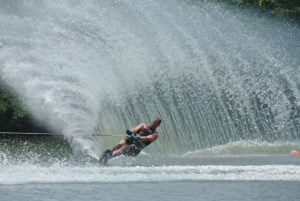
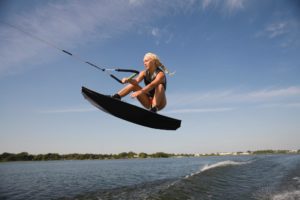
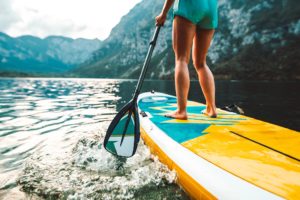
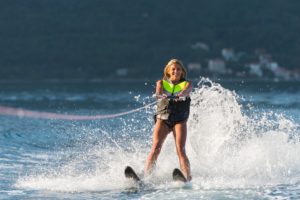

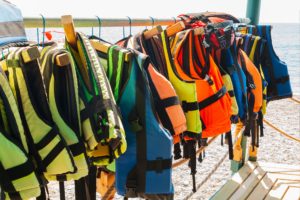
[…] your thing, go for a touring paddle board. For SUP beginners, more resources can be found in our Paddle Boarding for Beginners […]